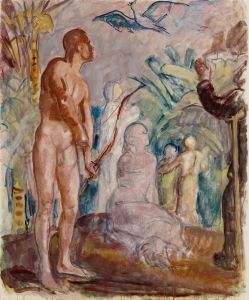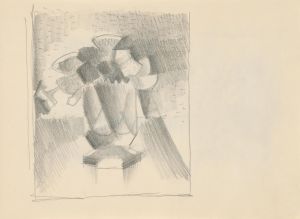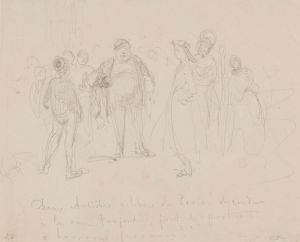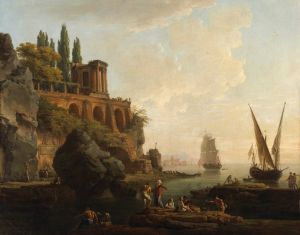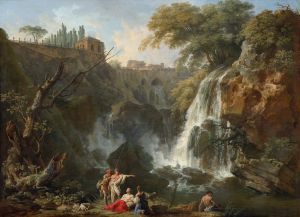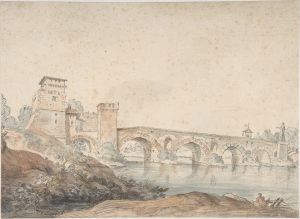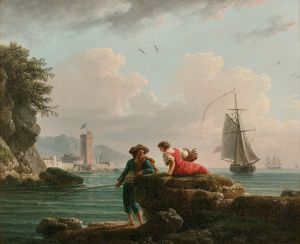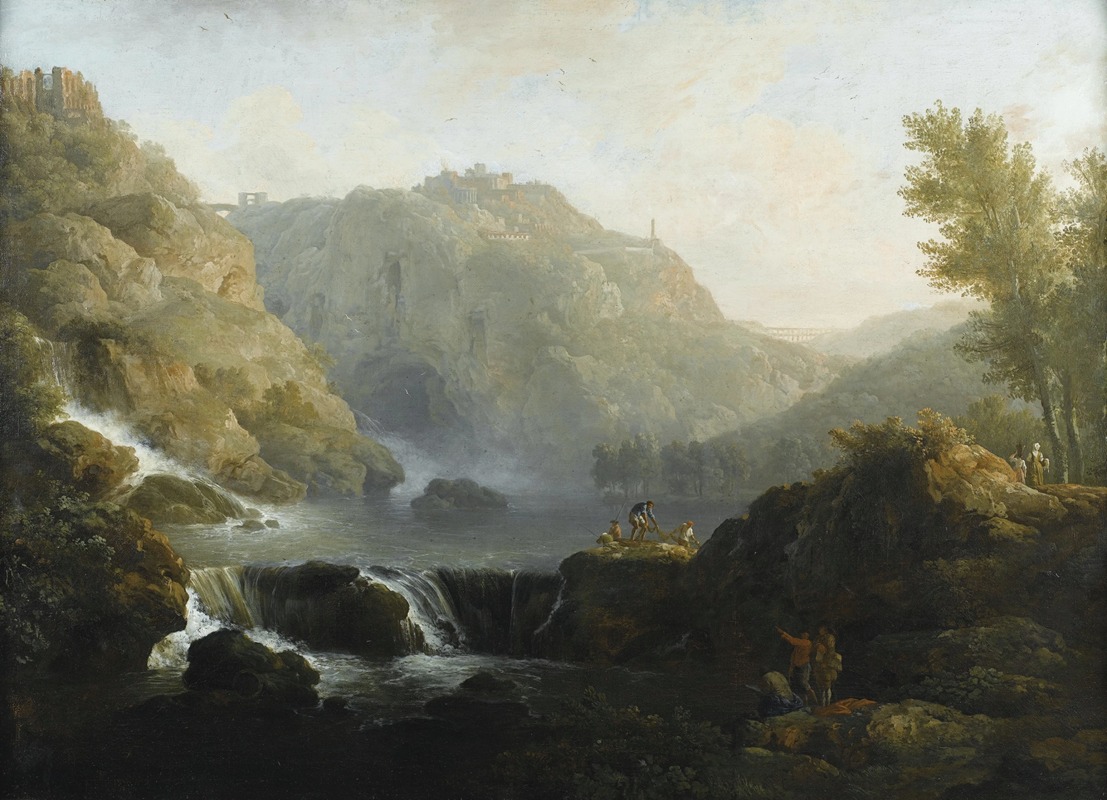
Dessinateurs face à une cascade au pied du Tivoli
A hand-painted replica of Claude-Joseph Vernet’s masterpiece Dessinateurs face à une cascade au pied du Tivoli, meticulously crafted by professional artists to capture the true essence of the original. Each piece is created with museum-quality canvas and rare mineral pigments, carefully painted by experienced artists with delicate brushstrokes and rich, layered colors to perfectly recreate the texture of the original artwork. Unlike machine-printed reproductions, this hand-painted version brings the painting to life, infused with the artist’s emotions and skill in every stroke. Whether for personal collection or home decoration, it instantly elevates the artistic atmosphere of any space.
Claude-Joseph Vernet's painting Dessinateurs face à une cascade au pied du Tivoli (translated as Draughtsmen Facing a Waterfall at the Foot of Tivoli) is a work by the renowned French landscape and marine painter, created during the 18th century. Vernet, who was born in Avignon in 1714 and died in Paris in 1789, is celebrated for his ability to capture the grandeur and beauty of natural landscapes, often infused with a sense of drama and romanticism.
This particular painting depicts a group of draughtsmen, or artists, positioned near a cascading waterfall at the base of Tivoli, a town in Italy known for its picturesque scenery and historical significance. Tivoli, located near Rome, has long been a source of inspiration for artists, writers, and travelers, particularly during the Grand Tour era. The town is famous for its natural beauty, including the waterfalls of the Aniene River, as well as its ancient Roman ruins and Renaissance villas, such as the Villa d'Este and Villa Adriana.
In Dessinateurs face à une cascade au pied du Tivoli, Vernet showcases his mastery of atmospheric effects and his keen observation of nature. The painting captures the dynamic movement of the waterfall, the interplay of light and shadow, and the rugged terrain of the surrounding landscape. The draughtsmen in the scene are depicted as small, almost incidental figures, emphasizing the grandeur and scale of the natural environment. This approach reflects Vernet's interest in the sublime, a concept that highlights the awe-inspiring and sometimes overwhelming power of nature.
Vernet's time in Italy, where he lived and worked from 1734 to 1753, had a profound influence on his artistic development. During this period, he was exposed to the works of Italian masters and the dramatic landscapes of the Italian countryside. His paintings from this time often feature Italian settings and demonstrate his ability to blend topographical accuracy with artistic imagination.
The exact date of Dessinateurs face à une cascade au pied du Tivoli is not definitively documented, but it is consistent with Vernet's Italian period and his broader body of work, which frequently includes landscapes with figures engaged in artistic or leisurely pursuits. The painting exemplifies Vernet's skill in combining human activity with the majesty of nature, creating compositions that are both visually striking and evocative.
Today, Claude-Joseph Vernet is regarded as one of the leading landscape painters of his era, and his works are held in high esteem for their technical precision and emotional resonance. Dessinateurs face à une cascade au pied du Tivoli remains an enduring example of his talent and his ability to capture the timeless beauty of the natural world.





